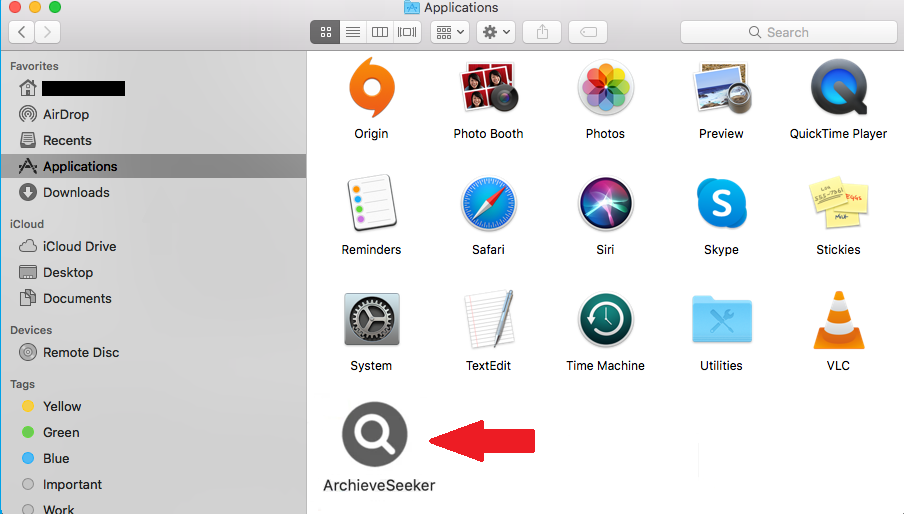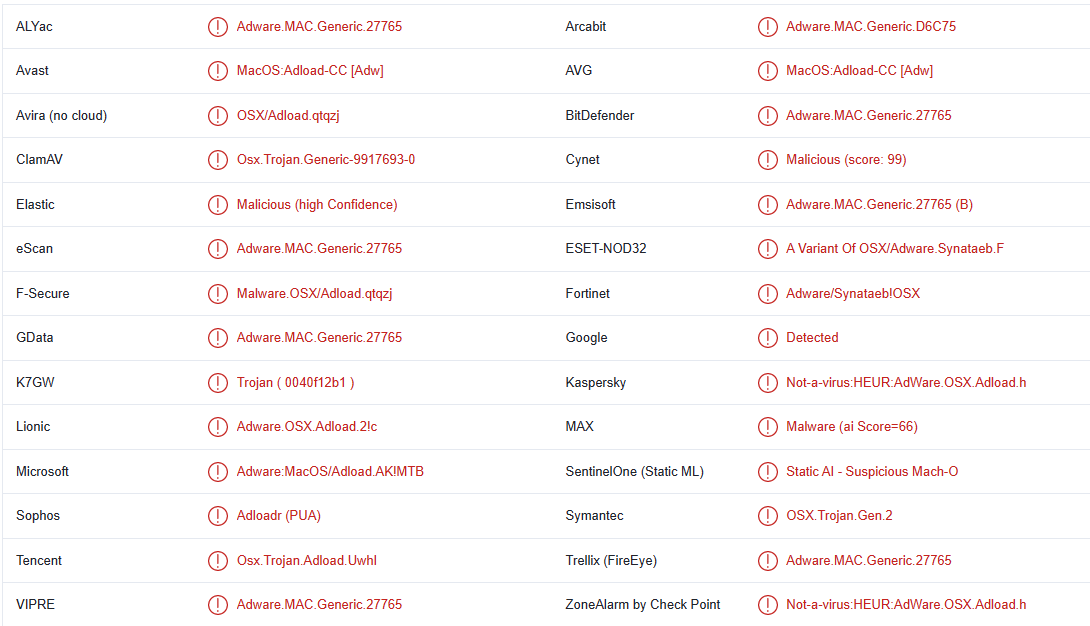ArchieveSeeker is an adware-type infection that targets Mac computers. It’s part of the AdLoad malware family. It’s not a dangerous infection because it does not directly harm the computer but it is very annoying to deal with if present on the computer. It will spam ads on your screen as you’re browsing in order to generate revenue. It could also expose you to tech support scams, as well as questionable download prompts. If you notice it in your Applications folder, we strongly you remove ArchieveSeeker (Mac) adware.
The biggest sign of an adware infection is the sudden significant increase in ads, especially when you’re browsing mostly ad-free websites. You will constantly be spammed with pop-ups, banners, redirects, etc. You will also get randomly redirected, even when interacting with safe sites. Showing you all of that advertisement content is the whole point of such infections.
ArchieveSeeker (Mac) adware will not directly harm your Mac because that is not its purpose. However, that does not mean it’s harmless either. It can expose you to highly questionable ads that could lead to more serious situations. For example, adware is often responsible for showing fake tech support notifications that aim to trick users into paying hundreds of dollars for support services they neither need nor actually receive. These fake notifications usually falsely claim that users’ computers are infected with serious malware infections and need to be cleaned immediately to prevent further damage. The notifications ask users to call certain numbers so they can supposedly get assistance from professional technicians. However, instead, users get scammed out of hundreds of dollars.
Adware can also promote questionable programs, making them seem appealing to users. This is why it’s important to research programs before installing them. You should also never download anything from ads, and instead opt for legitimate sources like official websites or safe app stores.
Lastly, we should also mention that adware is known to collect information about users and their browsing habits. ArchieveSeeker (Mac) adware will likely track what sites you browse, what you search for, your IP address, and other information. It likely will not have access to sensitive information but there’s no reason to allow any kind of data collection from such an unnecessary, not to mention suspicious, program.
If you notice that the adware is installed on your computer, you should remove ArchieveSeeker (Mac) adware right away. Using anti-virus software would be easiest but you can also delete ArchieveSeeker (Mac) adware manually. Once it’s fully removed, your browsing will return to normal.
How did ArchieveSeeker (Mac) adware install on your computer
Adware infections are usually the result of users’ poor browsing and installation habits. Developers creating infections like adware take advantage of the fact that many users do not pay attention to what they’re installing and how they do it. The end result is users being constantly spammed with annoying advertisements while developers make revenue.
In most cases, infections like adware and browser hijackers install via the free software bundling method. The way it works is those infections are attached to free software as extra offers. Said offers are authorized to install alongside the programs they’re attached to without requiring additional permission from users. Technically, the offers are optional but users need to manually deselect them to stop them from installing. They’re also initially hidden, which makes it difficult for users to prevent their installations.
If you want to correctly install free programs, you need to pay attention to the entire process. Most importantly, when given the option, you need to opt for Advanced or Custom settings instead of Default. Default settings will conceal all added offers and allow them to install alongside without your explicit authorization. Advanced settings, on the other hand, will make all offers visible and give you the option to deselect what you do not want.
Considering that software bundling is a rather questionable installation method, we recommend you always deselect all offers. All you need to do is uncheck the boxes of those offers. Once you have done that, you can continue installing the program.
Infections like ArchieveSeeker (Mac) adware can also be disguised as useful programs so you may have been tricked into installing it. It’s recommended to only download programs from reliable sources, never advertisements or pop-ups. It’s also a good idea to research programs before installing them. This will allow you to avoid unwanted installations.
How to remove ArchieveSeeker (Mac) adware
Adware infections are not particularly difficult to get rid of, though it’s recommended to use an anti-virus program. The program would take care of everything and delete ArchieveSeeker (Mac) adware automatically.
ArchieveSeeker (Mac) adware is detected as:
- MacOS:Adload-CC [Adw] by Avast/AVG
- Adware.MAC.Generic.27765 by BitDefender
- Adware:MacOS/Adload.AK!MTB by Mircosoft
- A Variant Of OSX/Adware.Synataeb.F by ESET
- Not-a-virus:HEUR:AdWare.OSX.Adload.h by Kaspersky
However, since it’s not a malicious infection, you can also remove ArchieveSeeker (Mac) adware manually. Follow the instructions provided at the end of this report if you need assistance.
Offers
Download Removal Toolto scan for ArchieveSeeker (Mac) adwareUse our recommended removal tool to scan for ArchieveSeeker (Mac) adware. Trial version of provides detection of computer threats like ArchieveSeeker (Mac) adware and assists in its removal for FREE. You can delete detected registry entries, files and processes yourself or purchase a full version.
More information about SpyWarrior and Uninstall Instructions. Please review SpyWarrior EULA and Privacy Policy. SpyWarrior scanner is free. If it detects a malware, purchase its full version to remove it.

WiperSoft Review Details WiperSoft (www.wipersoft.com) is a security tool that provides real-time security from potential threats. Nowadays, many users tend to download free software from the Intern ...
Download|more


Is MacKeeper a virus? MacKeeper is not a virus, nor is it a scam. While there are various opinions about the program on the Internet, a lot of the people who so notoriously hate the program have neve ...
Download|more


While the creators of MalwareBytes anti-malware have not been in this business for long time, they make up for it with their enthusiastic approach. Statistic from such websites like CNET shows that th ...
Download|more
Quick Menu
Step 1. Uninstall ArchieveSeeker (Mac) adware and related programs.
Remove ArchieveSeeker (Mac) adware from Windows 8
Right-click in the lower left corner of the screen. Once Quick Access Menu shows up, select Control Panel choose Programs and Features and select to Uninstall a software.


Uninstall ArchieveSeeker (Mac) adware from Windows 7
Click Start → Control Panel → Programs and Features → Uninstall a program.
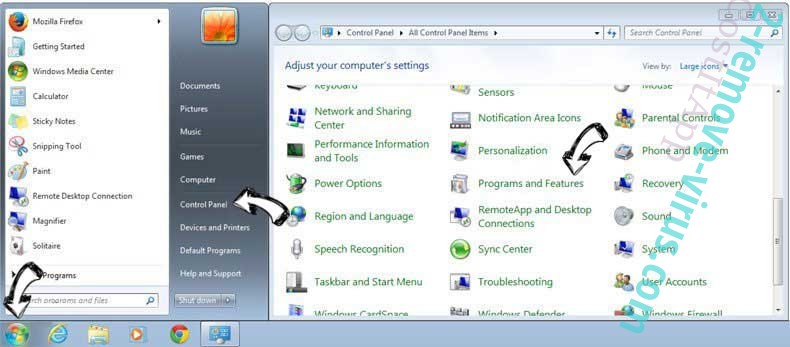

Delete ArchieveSeeker (Mac) adware from Windows XP
Click Start → Settings → Control Panel. Locate and click → Add or Remove Programs.
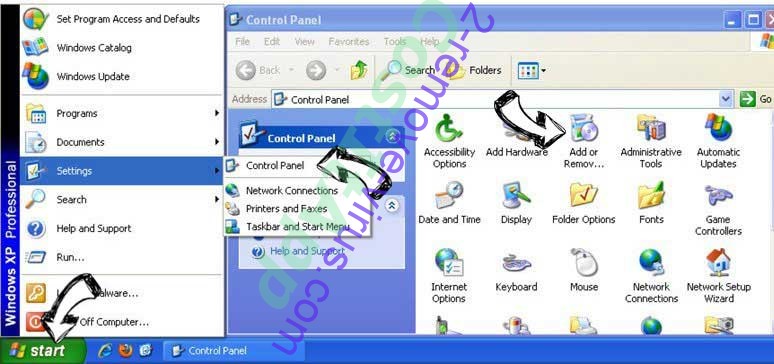

Remove ArchieveSeeker (Mac) adware from Mac OS X
Click Go button at the top left of the screen and select Applications. Select applications folder and look for ArchieveSeeker (Mac) adware or any other suspicious software. Now right click on every of such entries and select Move to Trash, then right click the Trash icon and select Empty Trash.
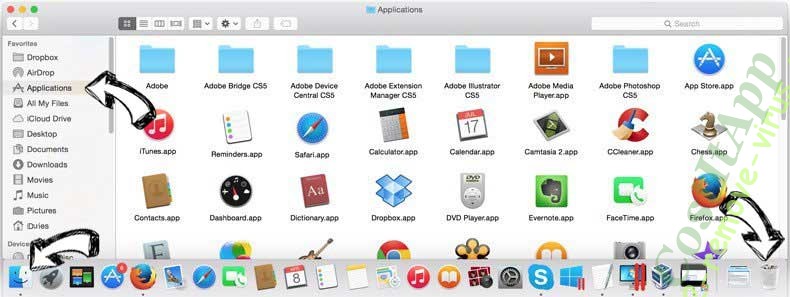

Step 2. Delete ArchieveSeeker (Mac) adware from your browsers
Terminate the unwanted extensions from Internet Explorer
- Tap the Gear icon and go to Manage Add-ons.

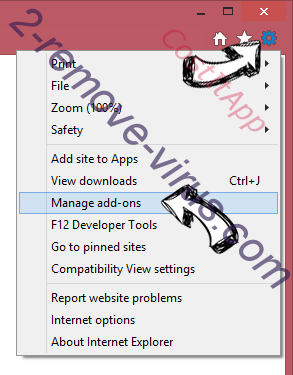
- Pick Toolbars and Extensions and eliminate all suspicious entries (other than Microsoft, Yahoo, Google, Oracle or Adobe)

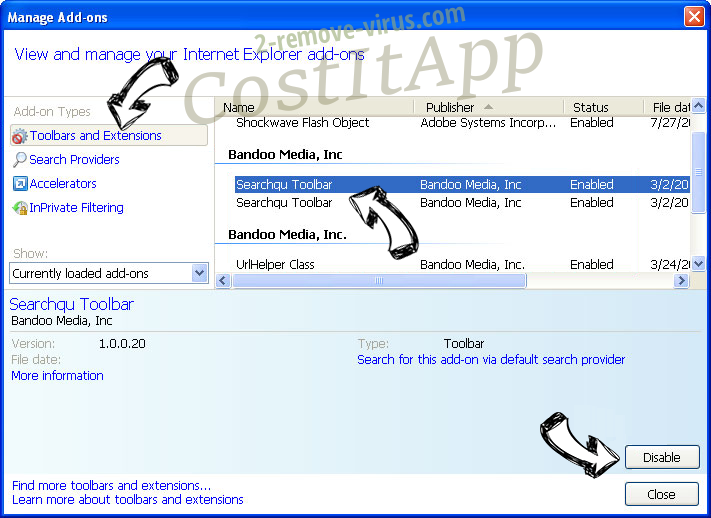
- Leave the window.
Change Internet Explorer homepage if it was changed by virus:
- Tap the gear icon (menu) on the top right corner of your browser and click Internet Options.

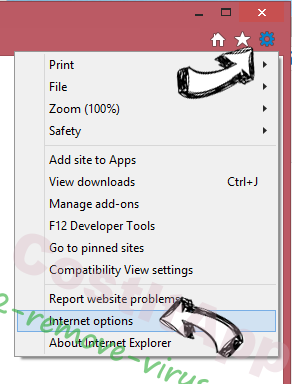
- In General Tab remove malicious URL and enter preferable domain name. Press Apply to save changes.

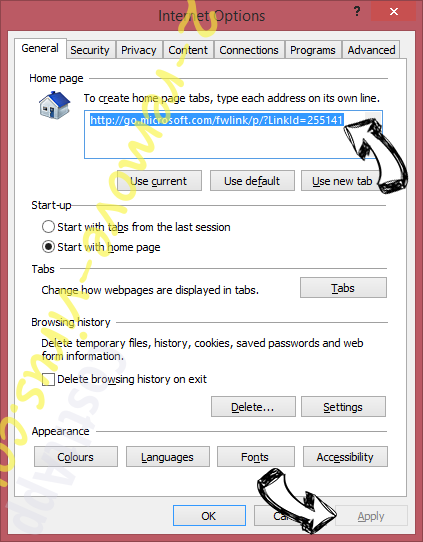
Reset your browser
- Click the Gear icon and move to Internet Options.

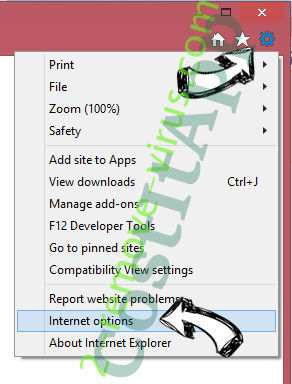
- Open the Advanced tab and press Reset.

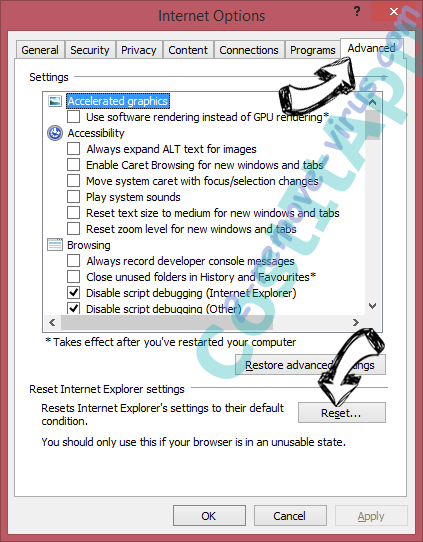
- Choose Delete personal settings and pick Reset one more time.


- Tap Close and leave your browser.

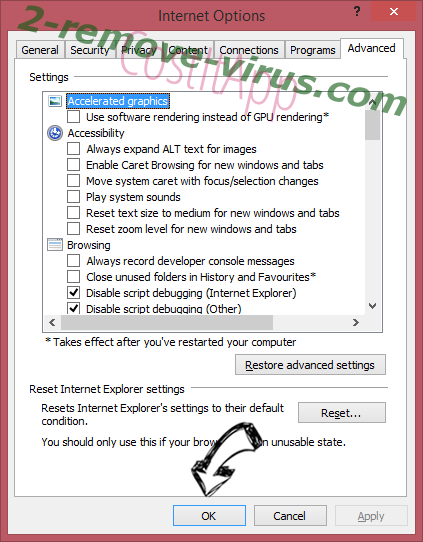
- If you were unable to reset your browsers, employ a reputable anti-malware and scan your entire computer with it.
Erase ArchieveSeeker (Mac) adware from Google Chrome
- Access menu (top right corner of the window) and pick Settings.

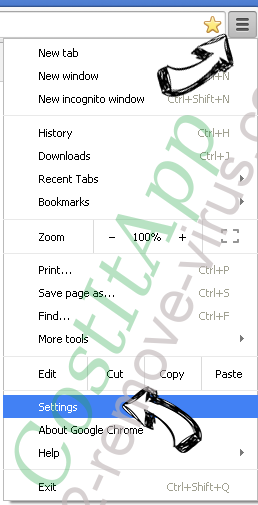
- Choose Extensions.

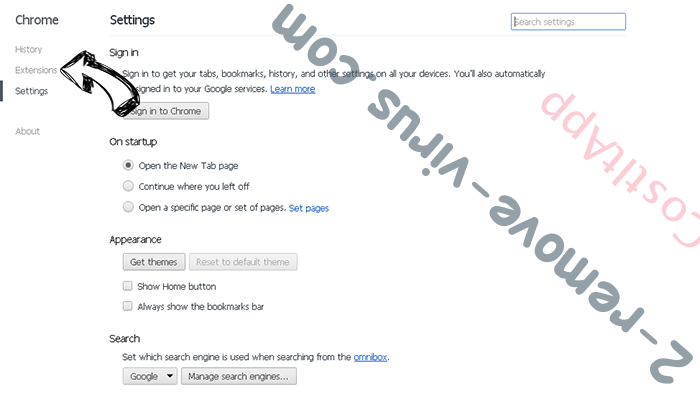
- Eliminate the suspicious extensions from the list by clicking the Trash bin next to them.

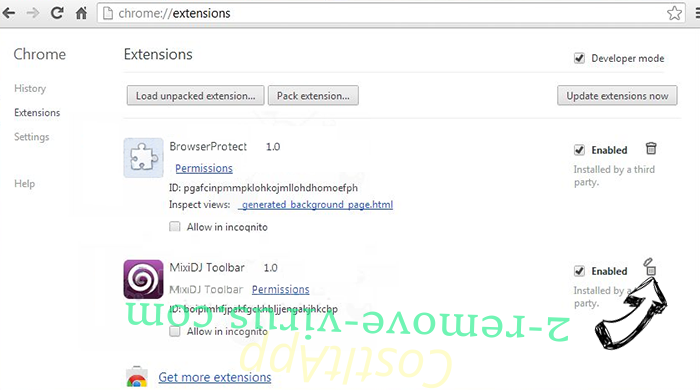
- If you are unsure which extensions to remove, you can disable them temporarily.

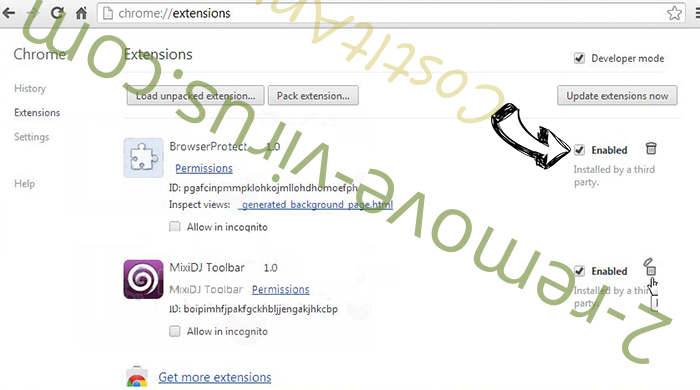
Reset Google Chrome homepage and default search engine if it was hijacker by virus
- Press on menu icon and click Settings.

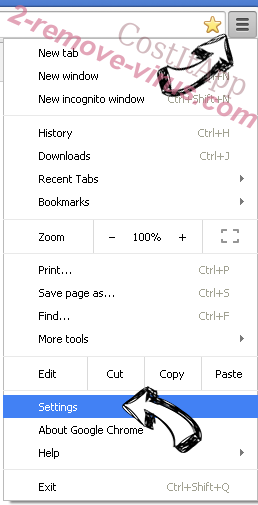
- Look for the “Open a specific page” or “Set Pages” under “On start up” option and click on Set pages.

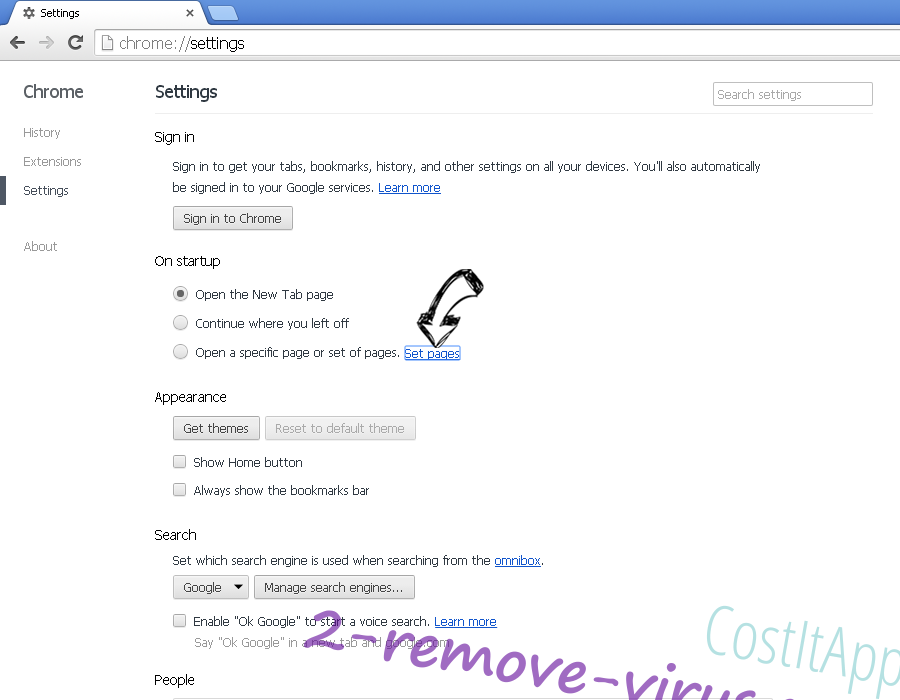
- In another window remove malicious search sites and enter the one that you want to use as your homepage.

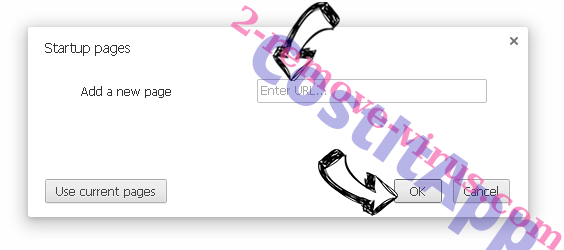
- Under the Search section choose Manage Search engines. When in Search Engines..., remove malicious search websites. You should leave only Google or your preferred search name.

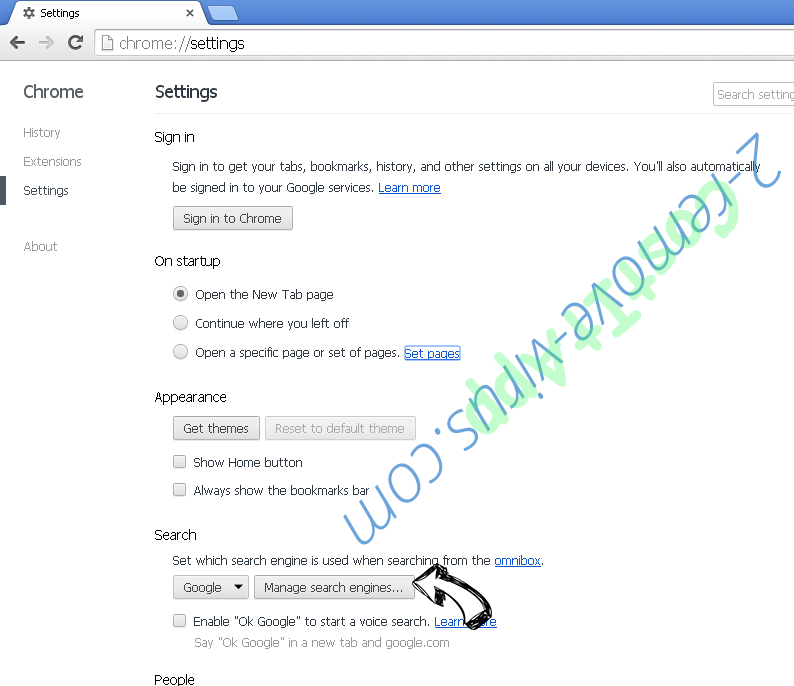

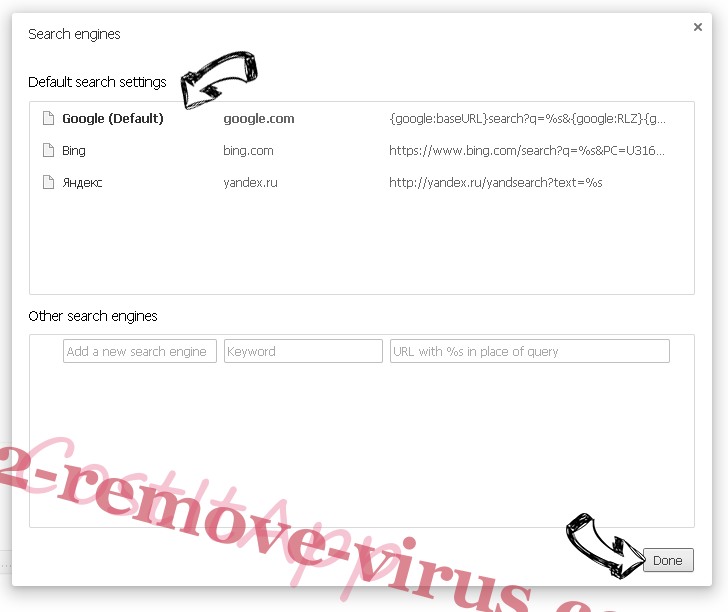
Reset your browser
- If the browser still does not work the way you prefer, you can reset its settings.
- Open menu and navigate to Settings.

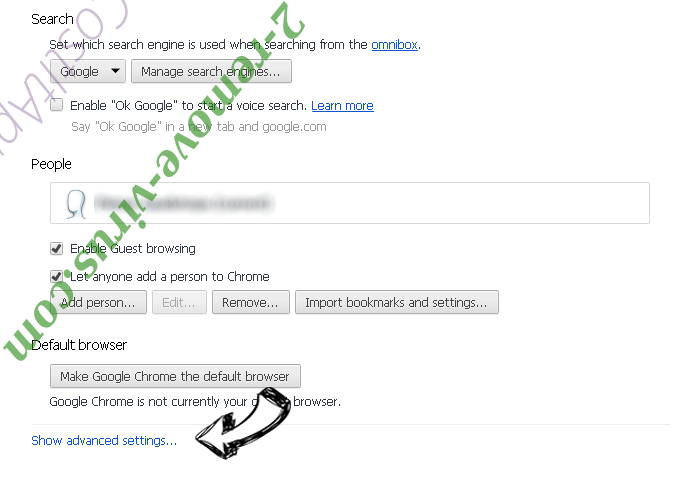
- Press Reset button at the end of the page.

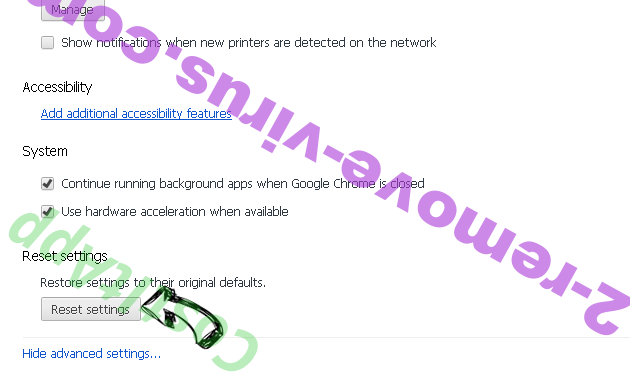
- Tap Reset button one more time in the confirmation box.

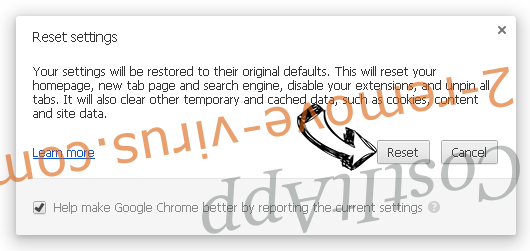
- If you cannot reset the settings, purchase a legitimate anti-malware and scan your PC.
Remove ArchieveSeeker (Mac) adware from Mozilla Firefox
- In the top right corner of the screen, press menu and choose Add-ons (or tap Ctrl+Shift+A simultaneously).

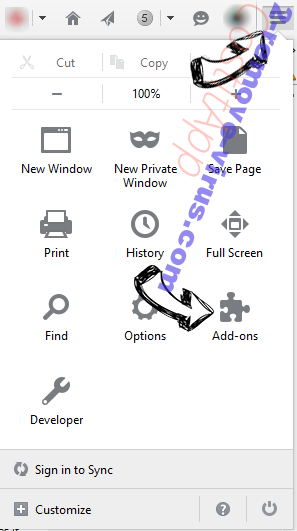
- Move to Extensions and Add-ons list and uninstall all suspicious and unknown entries.

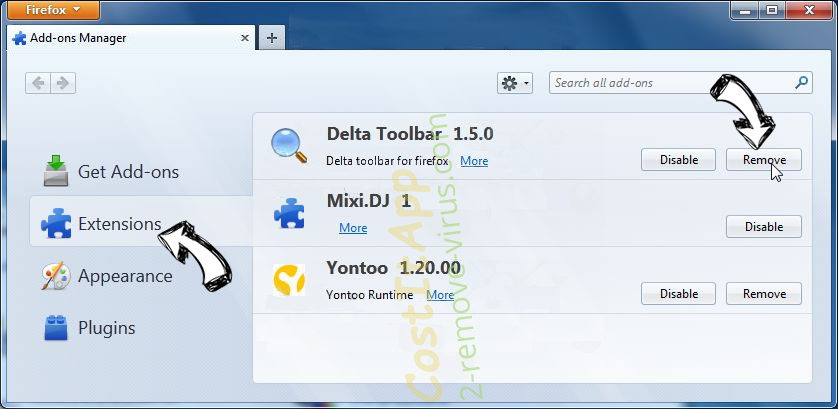
Change Mozilla Firefox homepage if it was changed by virus:
- Tap on the menu (top right corner), choose Options.

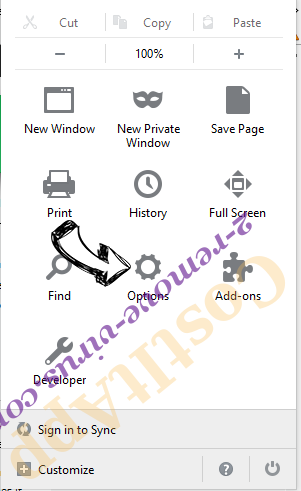
- On General tab delete malicious URL and enter preferable website or click Restore to default.

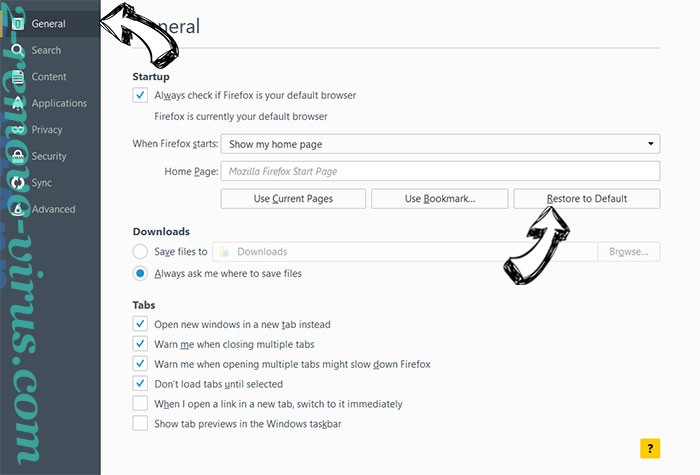
- Press OK to save these changes.
Reset your browser
- Open the menu and tap Help button.

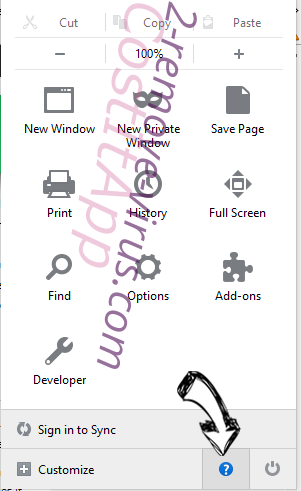
- Select Troubleshooting Information.


- Press Refresh Firefox.

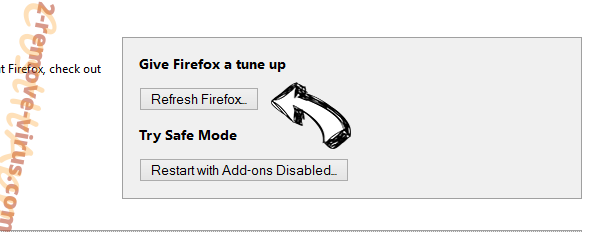
- In the confirmation box, click Refresh Firefox once more.


- If you are unable to reset Mozilla Firefox, scan your entire computer with a trustworthy anti-malware.
Uninstall ArchieveSeeker (Mac) adware from Safari (Mac OS X)
- Access the menu.
- Pick Preferences.

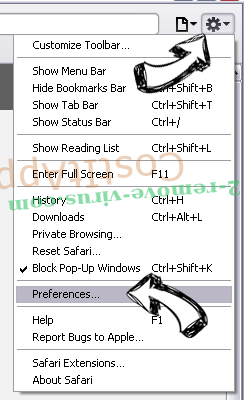
- Go to the Extensions Tab.

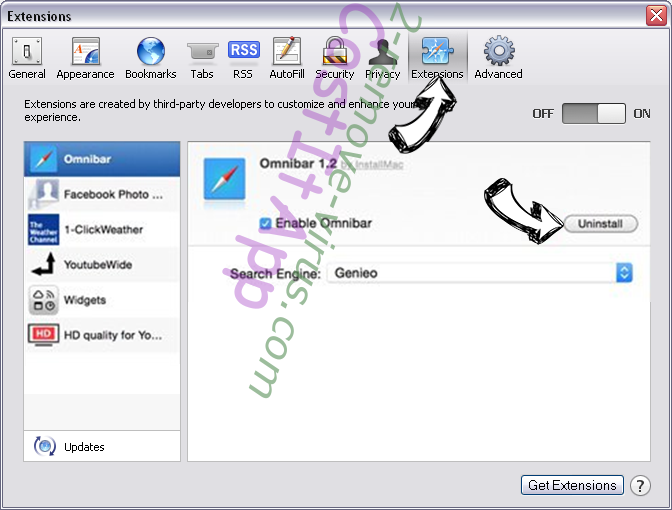
- Tap the Uninstall button next to the undesirable ArchieveSeeker (Mac) adware and get rid of all the other unknown entries as well. If you are unsure whether the extension is reliable or not, simply uncheck the Enable box in order to disable it temporarily.
- Restart Safari.
Reset your browser
- Tap the menu icon and choose Reset Safari.

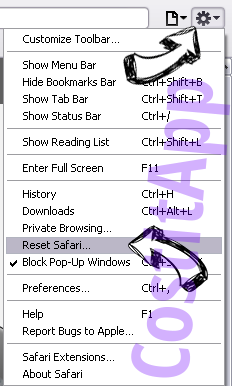
- Pick the options which you want to reset (often all of them are preselected) and press Reset.

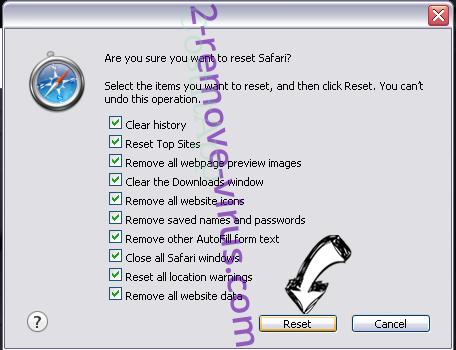
- If you cannot reset the browser, scan your whole PC with an authentic malware removal software.
Site Disclaimer
2-remove-virus.com is not sponsored, owned, affiliated, or linked to malware developers or distributors that are referenced in this article. The article does not promote or endorse any type of malware. We aim at providing useful information that will help computer users to detect and eliminate the unwanted malicious programs from their computers. This can be done manually by following the instructions presented in the article or automatically by implementing the suggested anti-malware tools.
The article is only meant to be used for educational purposes. If you follow the instructions given in the article, you agree to be contracted by the disclaimer. We do not guarantee that the artcile will present you with a solution that removes the malign threats completely. Malware changes constantly, which is why, in some cases, it may be difficult to clean the computer fully by using only the manual removal instructions.
